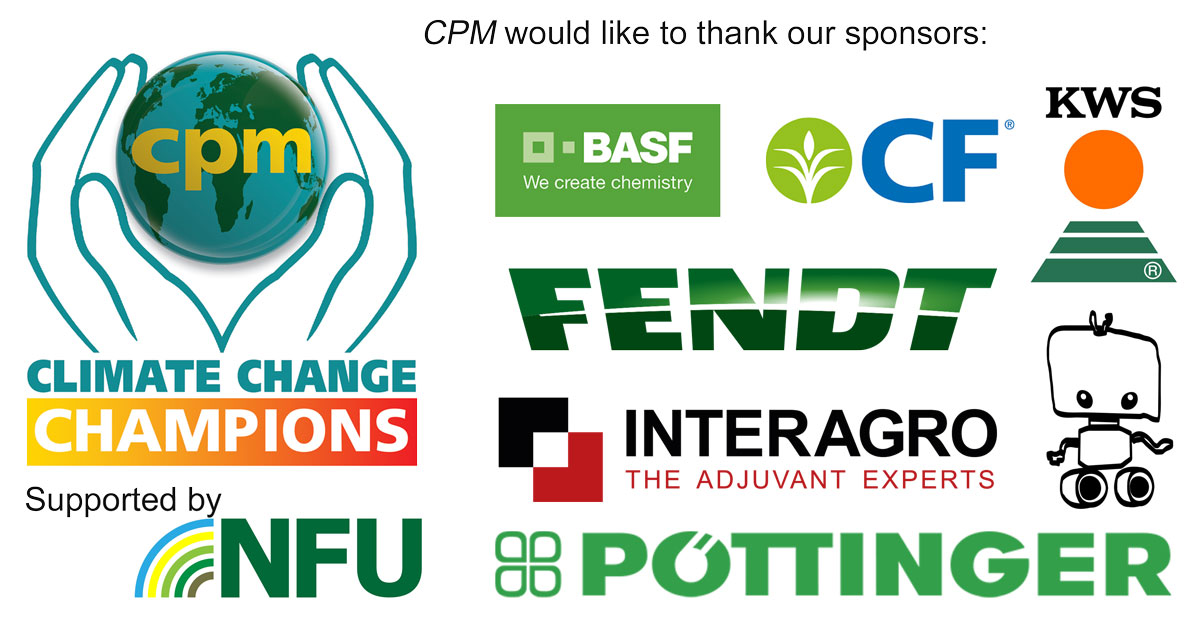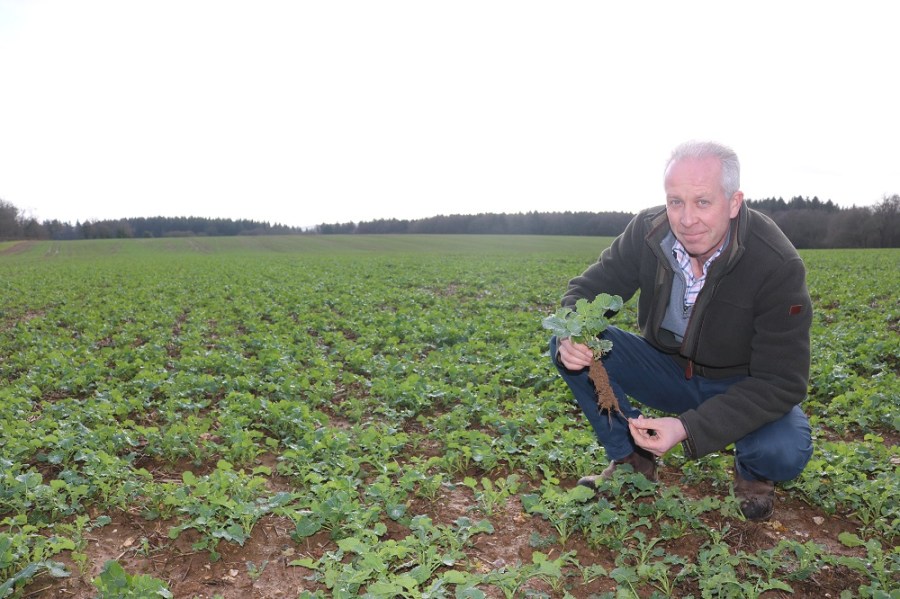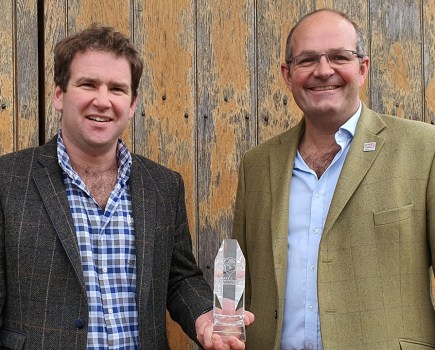Every step the Faccombe Estate in Hants takes towards Net Zero carbon emissions is turned into a commercial opportunity. CPM visits to explore the inspiration behind the changes.
If we’re not already at Net Zero, that’s exactly where we want to be.
By Tom Allen-Stevens
Al Brooks looks on at the 400hp Wood Terminator 10XL as it munches its way effortlessly through 75cm diameter trunks of diseased ash, and you get the sense there’s rarely a moment of his working day he doesn’t enjoy.
The seasoned woodchip that flies from the spout of this wood-chopping beast is sourced from areas of the 1720ha Faccombe Estate in Hants beset by ash dieback and now being sensitively felled and replanted. Very little of the brushwood and branches escape the jaws of the Wood Terminator and up to 300t/day can be processed for use through the estate’s wood-pelleting plant. This supplies fuel to the estate’s properties – the village of Faccombe which opened its own pub and guesthouse two years ago.
“We have long term plans to upgrade to a community heating system for the majority of cottages in the village, and for the dryer in the grain store,” says Al, who took up the role as Faccombe’s estate director four years ago.
“We draw water from our own borehole and have a wind turbine that powers parts of the estate. If we’re not already at Net Zero, that’s exactly where we want to be.”
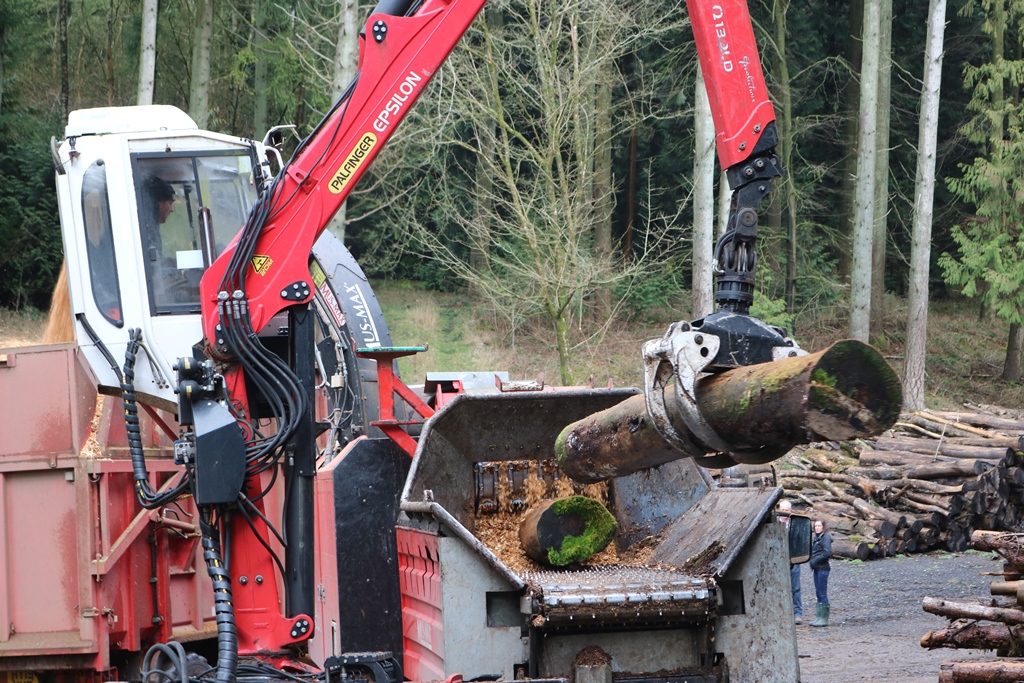
The Wood Terminator 10XL munches its way effortlessly through 75cm diameter trunks of diseased ash.
The estate lies 330m above sea-level on rolling chalk soils with a high flint content and a few clay caps. It’s ring-fenced with 546ha of woodland, but this isn’t the sum total of its carbon capture. Al’s been introducing changes across the rest of the land that he feels boost both the productivity and sustainability of the farming side of the business. Most of the farmland is given over to combinable crops, of which 100ha is rotated with grassland.
The reforms started with the sheep. “Every enterprise on the estate has to dovetail with the rest so you get the optimum benefits for the resource outlay you give them,” he says. “The sheep enterprise was losing money, however, so needed to change.”
The estate’s native lambing flock was previously reared under a traditional system, which put it out on pasture for the majority of the year, then into the sheds for lambing. So the flock’s been sold, replaced with 1500 ewe lambs purchased in Oct which are grazed outdoors for ten months and then sold in July as breeding stock.
“It’s meant a sizeable reduction in labour and machinery costs and released the sheds for alternative uses,” notes Al. “We quartered the loss on the enterprise in the first year, and we’re now on track to make a profit. But it’s the benefit it brings the arable side I value most.”
He’s introduced stubble turnips as a cover crop within the rotation and these are grazed by the lambs. “Having ruminant livestock may be a high carbon-equivalent output, but I feel this is more than offset by what’s captured by the cover crops. The lambs turn these into dung, applied directly to the soil which improves its fertility, reducing our requirement for bagged fertiliser and raising arable productivity. What’s more, there’s been a significant reduction in lameness as a result of the more extensive nature of the enterprise” he adds.
It’s this focus on the estate’s soils that drives Al’s ambitions to raise productivity sustainably. “We benefit from our chalk, but the high flint content and our height above sea level make this land very drought-prone. So soil structure and organic matter (SOM) content are absolutely critical.”
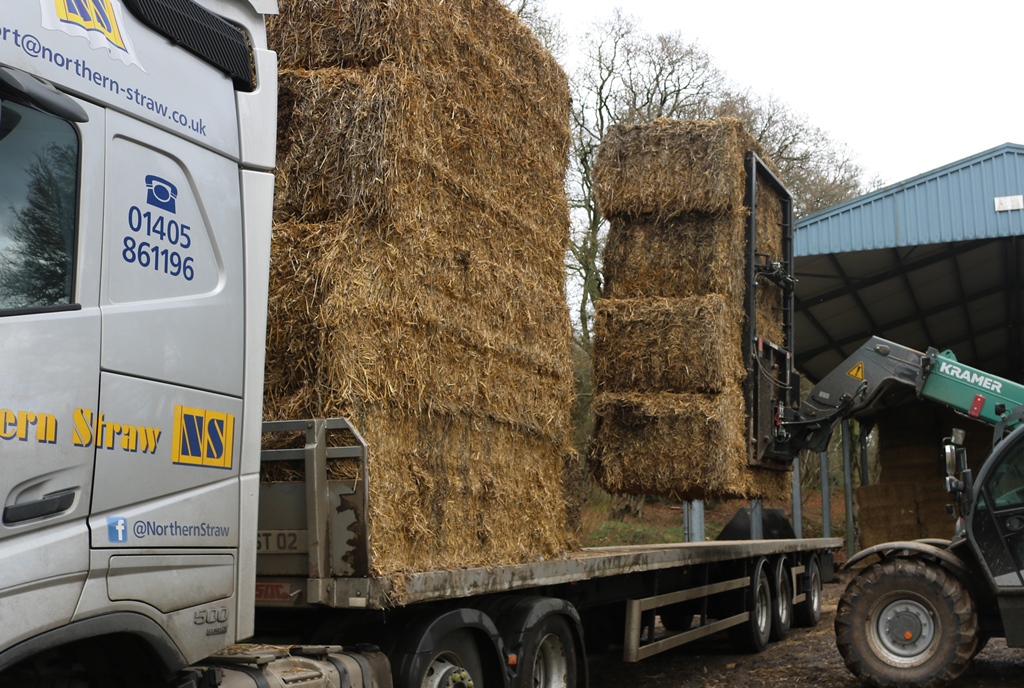
Rather than incorporating the straw, 2000t/yr are sold to power stations as a renewable fuel source.
As with the woodland, however, he’s turned this drive for soil improvement into a commercial, bio-based opportunity. Rather than incorporating the straw, 2000t/yr are sold as a renewable fuel source. “We’re a fair few miles away from the power stations we supply at Sleaford and Ely, but a back-haulage deal on straw for mushroom compost makes it all worthwhile. It also brings us 1000t/yr of valuable material to build SOM which is far better than straw itself, that I don’t rate as a soil improver – it takes up available N and attracts slugs.”
Last year’s average wheat yield was 10.1t/ha, and Al admits they’re not always barn-busting, but it’s at the high end of what soils in the area achieve. “We also aim to add value to everything we grow.”
All the wheat is sold for milling, apart from what’s fed to the pheasants for the estate’s shoot enterprise. In recent years, this has involved a focus on high-protein wheats, sold at a premium price over milling. “We were growing KWS Montana, but have switched this year to Mv Frederica,” he says.
Reputed as being “Soissons-early” in its maturity, this new variety from Angus Wheat Consultants has similar bread-making quality to German E-grade wheats, so has the potential to displace imports. But how does Al get the protein into the ear without compromising yield on soils prone to drought?
Again, his focus lies beneath the soil surface. “Getting roots down quickly is paramount. We’ve been looking at how we can encourage plants in their early growth stages to push their energy downwards.”
He’s a strong advocate of using biostimulants to do so. “I first started using them about 10 years ago, when I was farm manager at the Waddesdon Estate in Bucks. I saw it as a way to reduce reliance on fungicides and lower the chemical bill,” he recalls.
“One year we missed a tramline with the application and noticed a difference in above-ground growth. But it was when we dug up plants we realised this was down to a massive difference in rooting depth and structure.”
He’s brought his experience to Faccombe, where it’s not just wheats that have benefited from this approach. The farm grows HEAR oilseed rape, and like many across the UK, faces the considerable challenge of achieving a good establishment. That became particularly acute last season as the already dry soils suffered a prolonged drought in Sept.
“A significant area looked horrendous, and as a last resort, we thought we’d offer it a little TLC in the form of 2 l/ha of Bridgeway,” Al explains.
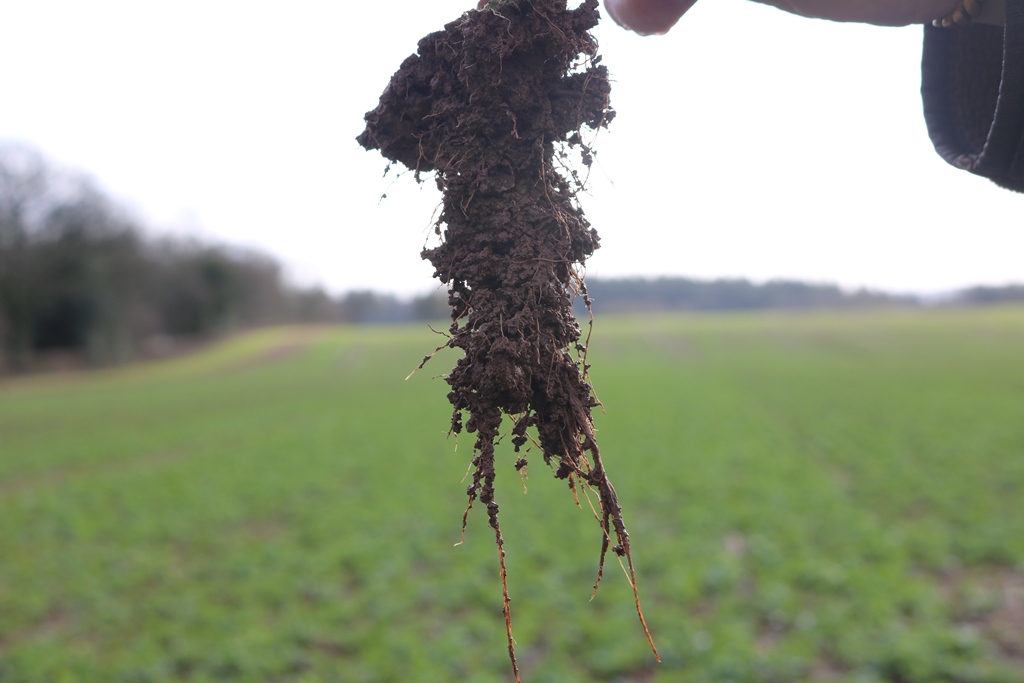
James Higginbotham and Al Brooks have been exploring the use of biostimulants in encouraging root growth of their HEAR oilseed rape.
“It was a transformation. The plants took on an altogether different colour, becoming much greener. The smaller plants which had been looking particularly stressed, put out a more fibrous root system and the crop went from strength to strength. We repeated the application in Nov and one field in this area turned out to be the highest yielding of our OSR crop, at 5.1t/ha, against a farm average of 4.8t/ha.”
In the same autumn, the farm trialled a new biostimulant seed dressing for winter wheat – two adjacent fields of KWS Kerrin were treated. Laboratory trials carried out at Nottingham University had suggested up to 77% extra root growth could be achieved. “These fields were second wheats put into a challenging seedbed in mid Oct. There was a noticeable difference in performance over the untreated headland – we pulled plants and the rooting looked so much better,” he reports.
Cost savings on the machinery side have brought carbon savings, a move to Fendt mainline tractors bringing between 15-20% lower fuel costs alone. Cultivations themselves have been reduced, but the farm’s some way from zero till, says Al. “There was a heavy reliance on the plough four years ago and we’ve moved to min-till, based on a 4.7m Horsch Terrano going down to about 150mm.
“But the soils are light and don’t self-structure well. I’m not sure a move to direct drilling would suit us, given the compaction from the sheep in the rotation although we do practise it on a neighbouring farm where we have a contracting arrangement. We’re always looking to learn and improve, however.”
Assistant manager James Higginbotham has high hopes for the 6m Grange toolbar the farm had on demonstration that goes in front of the Väderstad drill to make a one-pass system for OSR establishment.
“Along with our HEAR variety, height above sea-level and use of biostimulants, we’re finding we’re keeping ourselves clear of damage from cabbage stem flea beetle. We’re now looking at how we can use the toolbar in the cereals,” he says. “But every cultivation is a resource consumption and we wouldn’t make a pass unless it was truly required for a productive crop.”
Al notes the estate’s in a transitional phase with its soils. “If we move too fast, they’ll end up in an anaerobic state, which would be even worse from an emissions point of view. It’s an evolution that’s needed, not a revolution – if we make knee-jerk reactions to ill-founded ambitions, we’ll get it wrong,” he says.
“At the end of the day a significant output from the estate is the high quality food it produces. I’d say we have a low carbon cost comparatively in how we produce this – financial and environmental sustainability underpin everything we do.”
Closing the circle for a sustainable community
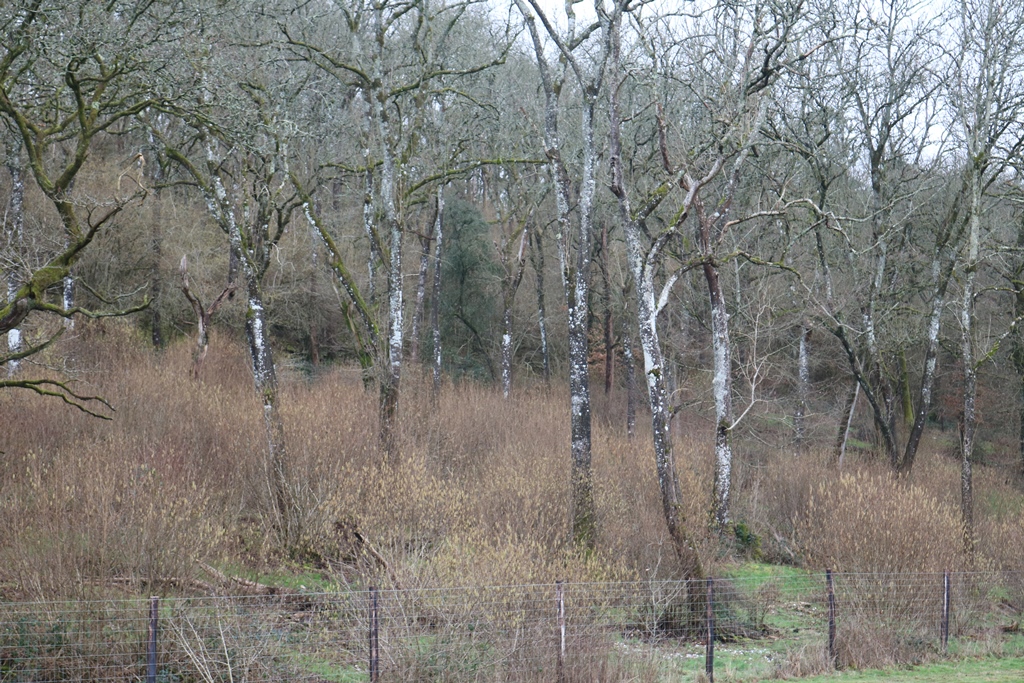
Areas of forestry lost to ash dieback are sensitively replanted with species that will secure its long-term value.
Faccombe’s woodland lies at the heart of an estate with true Net Zero ambitions. Half of this is planted with softwood, felled strategically and replanted, following the UK Forestry Standard – 21,500 new saplings were put in last year with another 10,000 due to be established this year.
The best of the timber is sold for log cabins and other construction uses, ensuring long term sequestration of the carbon captured, notes Al. “One thing I noticed when I started here four years ago however was the amount of usable forestry material that was going to waste. We now aim to utilise nearly all of the smaller branches and brushwood, as well as the usable timber itself.”
This includes making best use of the diseased and dying ash trees – 70% of the non-softwood area is predominantly ash. “It’s tragic how ash dieback (Hymenoscyphus fraxineus) is ravaging the trees on this estate,” he remarks. “We’re ensuring the areas we have to fell are sensitively replanted with species that will secure the long-term value of this woodland.”
But he’s also turned Nature’s loss into a commercial opportunity for the estate, and one that ticks the environmental box, too. Identifying an expanding market for wood pellets, Al carried out a feasibility study for installing a processing plant on the estate. “The Government’s renewable heat incentive (RHI) scheme has created huge demand for pellets from a renewable source that displace fossil fuels used for domestic heating, but currently most of these are imported. So I tracked down a supplier of the plant required to produce a higher quality, dust-free product.”
Installed two years ago, the plant currently produces about 2500t/yr of pellets, sold into this growing market. About 360t/yr is used on the estate itself – aside from the manor house, there are 35 properties in Faccombe village, all owned by the estate, as well the new pub and guesthouse and a few commercial units. These are gradually being converted to biomass heating, which has already displaced 65,000 litres/yr of heating oil.
Electricity is fed to the community from the estate’s 500kW wind turbine that sits high on a hill, while barn rooves are clad in solar panels, putting another 250kW into the local network, with surplus peak output sold to the grid.

Electricity is fed to the community from the estate’s 500kW wind turbine that sits high on a hill.
“We’re looking to upgrade the turbine to a 750kW version that would take us even further towards being self-contained. The main limitation is the grid connection, though. So we’re considering setting up a smart microgrid, installing batteries to store the peak output, although I’m not convinced the materials used in these are particularly carbon-friendly,” notes Al.
The estate has its own borehole that supplies the village with water, but it’s not just the human residents who are looked after in this virtuous community. Wildlife enhancement is not only an integral part of the estate but essential for its thriving shoot enterprise. There’s 150ha of habitat for wild birds as well as beneficial insects. The farm is also part of the ASSIST project (Achieving Sustainable Agricultural Systems), an £11M public-funded project aimed at increasing the efficiency of food production while enhancing farming’s environmental delivery and providing an invaluable carbon sink.
“The project has shown us how we can enhance beneficials and cut our use of inputs, which helps towards our carbon savings,” explains Al.
And he’s relatively well informed where this is concerned – the estate uses carbon footprinting software to assess its progress towards net zero. But this is far from a refined way to tell where they stand, Al maintains. “We know the carbon cost of our individual enterprises, but it doesn’t take account of how these dovetail together. We need something that’s intuitive and user friendly and will tell us the net carbon footprint across the estate, and I reckon we’re pretty close to Net Zero already.”
What makes Al Brooks a Climate Change Champion?
Innovative ideas
New ventures and changes implemented across the estate not only reduce net emissions, but harness a real commercial opportunity. A determination to drive up productivity goes hand-in-hand with a resolve to do so sustainably, with a willingness to try something new to get there. Carbon footprinting software tracks progress.
Productivity push
Enterprises across the estate dovetail, aiming for them all to perform at optimum output for minimal resource. Targeting value-added markets and driving root growth down into drought-prone soils is helping achieve this.
Cultivation care
Tillage has been reduced as part of a measured, on-going journey, aided through cover crops and sheep-grazing. Organic matter has been raised through selling off straw and replacing with biosolids, compost and manure. Diseased woodland is being sensitively replanted.
Bio-based boldness
Timber is sold into construction or turned into pellets as a renewable fuel source for biomass boilers. The estate is moving towards its own, home-sourced community heating system and is already supplied electricity through a wind turbine and solar panels. Straw is sold to power stations as a renewable fuel source.
Innovation lies at the root of climate care
The solutions that will help farming deliver Net Zero may quite literally be unearthed by exploring the very root of the issue, believes Interagro’s Emma Ralph.
“Every farm will start the journey to Net Zero from a different place, but achieving this in reality will require the whole ag industry to work together. For Al, his focus with his crops has been to drive energy into their roots and stimulate growth beneath the soil surface,” she notes.
“It’s where our interests lie, too. We see our role in finding solutions that will help growers capitalise on the opportunities they have to capture carbon as well as to help cut the carbon cost of current practices. Biostimulants are valuable tools both in enhancing crop performance, and thereby capturing carbon, and in increasing crop resilience. Adjuvants play a crucial role in improving productivity and optimising the performance of plant protection products.”
These are the innovations that help enable farmers to continue to produce the high quality food that’s required for a growing population, alongside a backdrop of regulatory and resistance challenges, she says.
“But farmers are also on the frontline of climate change. British farmers are the best in the world when it comes to innovating, problem solving and finding their own solutions, and there are few farmers who can better illustrate this than Al with what he’s achieved at Faccombe. That’s why Interagro is pleased to support his nomination as Climate Change Champion 2020.”
Climate Change Champions
UK Farming has set itself the challenging target of Net Zero emissions by 2040. Although led by the NFU, it will take the entire industry, working together in a partnership approach to meet this ambitious goal.
But there are individual growers, thought leaders who have already started on this journey. They have the ideas, the progressive outlook and the determination to shape positive change. CPM has teamed up with leading agricultural suppliers who have a credible Net Zero aspiration to identify these individuals and bring them into the top-level discussion about how farming can position itself as the solution to climate change. CPM readers will get the chance later this year to decide who will be awarded the accolade of Climate Change Champion 2020.
